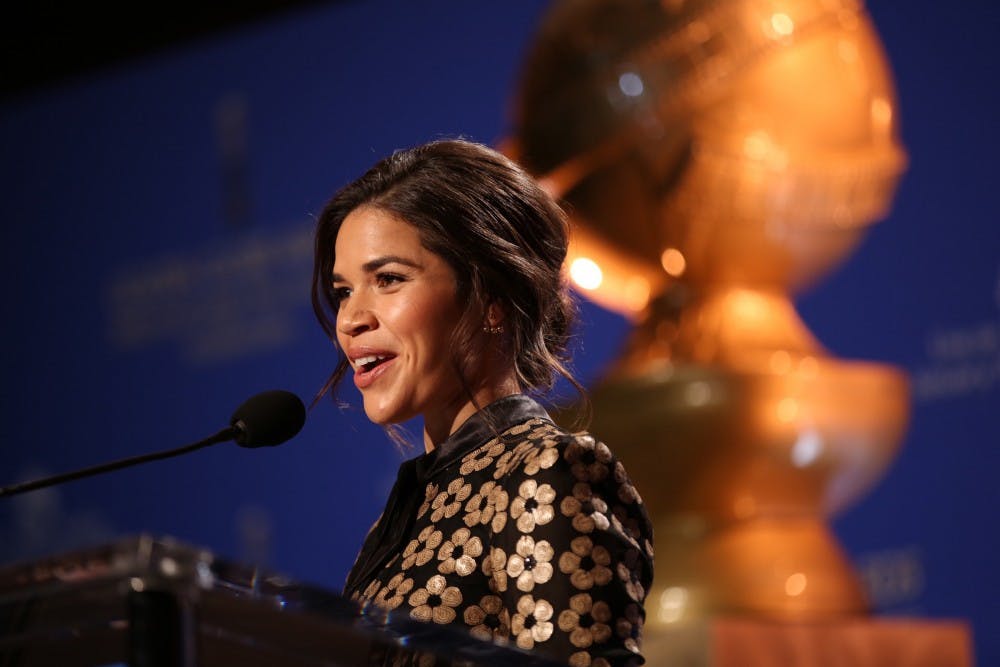In spite of the fact that Latinxs constituted 17 percent of the total U.S. population in 2013, the big screen still has a big diversity problem.
Guillermo Reyes, a professor of Latinx theater and film, said much of Hollywood's ability to fairly and equally represent its Latinx players originates behind the camera with producers, writers and directors.
"It really comes down to the writing," he said. "If the writers are true to themselves and their background, then they can avoid the stereotypes. It's important to create complexity of character."
In other words, Latinxs cannot continue to be typecast into only roles like the "sensual Latina" and the "criminal," Reyes said. He said full representation means Latinxs are cast into roles that show their complex and multifaceted heritage.
Reyes said he believes representation is best when the writers and directors do their homework and make sure the racial group they're presenting is being portrayed with detailed accuracy.
However, before any of that can take place, Latinx directors, producers and writers in Hollywood must be given the freedom to tell authentic Latinx stories, he said.
"Mexican directors, for instance, are finding a place for themselves in Hollywood," Reyes said. "But the real test is whether Hollywood will let them tell stories that are genuinely Latino."
Film studies sophomore Reeb Menjivar believes that in order for the mis- or under-representation of Latinxs in film to decrease, their roles need to be normalized and extended into inter-sectional realms to include, for example, more LGBT Latinxs in film.
Menjivar said she strives to base her future career in the film industry off of expanding representation in this way.
"It's important to have representation among actors as well, but it's really important to have people directing and writing because they're the ones who are actually telling our stories through their perspective," she said.
Menjivar admires a lot of Latinxs in film, including Mexican director Alejandro González Iñárritu. Beyond his well-known work such as "Birdman" and "The Revenant," González Iñárritu is also responsible for "Amores Perros," one of Menjivar's favorite films.
However, she said the people she admires most are other Latinxs in her community who are striving to give a voice to people who are silenced. She believes that, along with an emphasis on education, the media needs to be feeding young Latinxs positive messages about their self-image.
"(Film) should be sending young Latinxs a message about not trying to fit into a box," she said. "And that they shouldn't try to change themselves. Not their skin color, not anything."
Those messages don't always have to come in a shiny Hollywood box. One of her favorite films is the low-budget "Wassup Rockers," a film she feels powerfully profiles the lives of Central American kids in L.A. while tackling subjects like police brutality and racism in the Latinx community.
Not surprisingly, Menjivar also spoke of the film "Selena" with notable love and reverence. Aside from the film's portrayal of a Latinx legend, Menjivar also said she liked the way it presented Selena's story as more than its tragic ending.
"The way icons' stories are told is very important," Menjivar said. "It seems like a lot of stories about famous people of color like that tend to focus on the tragedy ... instead of how they impacted the community."
Still, there is little to no argument that the Latinx presence in Hollywood is not as large or as fair as it should be. Even when Latinxs do appear in film, the mainstream is notorious for putting them into a box and getting them confused for each other.
Actresses Eva Longoria and America Ferrera poked fun at this tendency during an unscripted presentation at the Golden Globes earlier this month.“I’m Eva Longoria, not Eva Mendes,” Longoria said.
“And I’m America Ferrera, not Gina Rodriguez,” Ferrera followed.
“And neither one of us are Rosario Dawson,” Longoria continued.
Some speculate that this confusion occurs so frequently because too many Americans remain largely unaware of the depth and breadth of cultural diversity that exists within the Latinx community.
Michelle Martinez, Ph.D, a full-time instructor for film and media studies and transborder studies, echoes this sentiment, saying that there needs to be more specificity within Latinxs' representation in film.
"When Latinx stories are being told, they're being marketed as something niche," she said. "We're not a genre, we're a collection of individuals. I am really calling for the evolution of a racial binary into a spectrum. We ignore the fact that 'Latinx' is an ethnicity that transcends and supersedes the racial binary of black and white. In doing so, we completely omit the beautiful spectrum of Latinx identities, including Afro Latinxs, Indigenous Latinxs and Asian Latinxs."
Correction: The reporter mistakenly referred to Michelle Martinez as a teaching assistant. She is actually a professor of film and media studies and transborder studies. The word "indigenous" was also omitted in her final quote. The article has been updated to reflect these facts.
Related Links:
What representation sounds like for America's young Latinxs
Reach the reporter at celina.jimenez@asu.edu or follow @lina_lauren on Twitter.
Like The State Press on Facebook and follow @statepress on Twitter.




